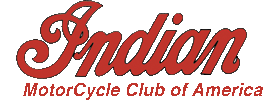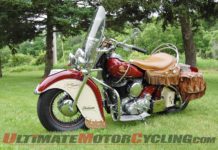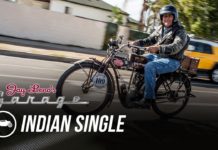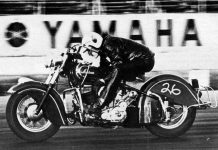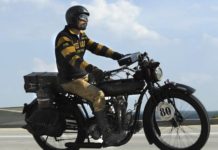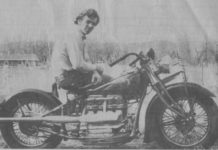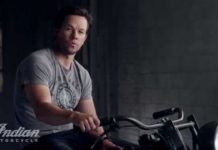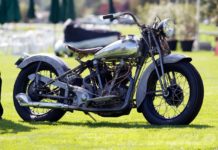For Sale: A 1919 Indian Power Plus Board Tracker
Few of us can afford it but that doesn't mean we can't look at the pictures! ...
1947 Indian Chief Roadmaster | History-Making Motorcycles
The recent resurrection of Indian Motorcycle by Polaris conjures memories of the originals and engenders comparisons of the classics to the new generation.
Larry Van...
1912 Indian Single hits the street after a silly start up with Jay Leno!
1912 Indian Single is a two-wheeler that Jay Leno just couldn’t pass up. In this episode he highlights the stock 1912 Indian Single and talks...
Indians Forever – A Visit with Bob Stark
Here's "Bullet Bob" Stark urging the test Indian "80" past the Chrondeks at a terminal velocity of 81.08mph, 1609 ET.
While the figures might not be impressive alongside times turned in by more modern "Superbikes," comparing the FFLH times (obtained at the same racetrack last November) with the Chief's tends to bear out the "Indians Forever" view.
Motorcycle enthusiasts soak in the exhaust at Cannonball Run (09/10/14)
One of the oldest of the antique motorcycles that sat arrayed on Spanish Street on Tuesday afternoon was a 1916 Harley-Davidson, just a shade...
New Beginning at end of Indian Bike Trail
New Beginning at end of Indian Bike Trail
Motorcycle Restoration part of nostalgia trip
BOULDER (AP) — A growing band of once nearly extinct Indians is...
Indian Motorcycle Military Legacy
America's first motorcycle company, today announced its Scout Inspired Custom Series; a chronology of the rich, century-long history of the Indian(R) Scout(TM) motorcycle....
Crocker Motorcycle Company Resurrected- Quail Motorcycle Gathering
Crocker & Indian Shared a history - Let's read about the revival....
After nearly twelve years of hassles and legal setbacks, a brand-new Crocker Big-Twin...
